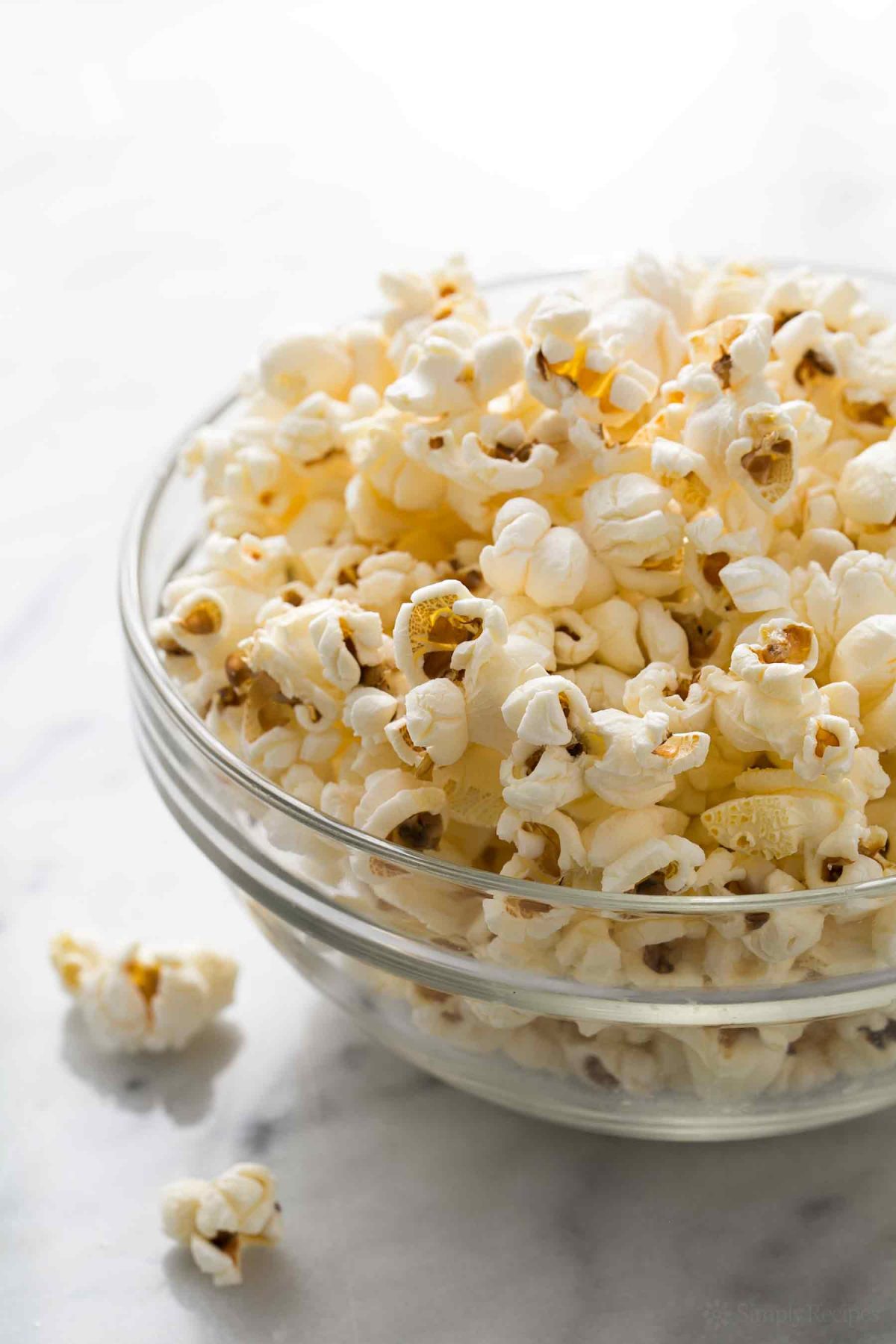An iconic snack synonymous with the movie theatre and entertainment, actually packs quite a pop as a healthy snack as well.
Archeologists have found traces of popcorn in 1,000-year-old Peruvian tombs. This week, we’ll take a look at the story behind this popular snack, and discover that there’s more beneath that hard husk than meets the eye.
It’s been said that popcorn was part of the first Thanksgiving feast, in Plymouth Colony in 1621. According to myth, Squanto himself taught the Pilgrims to raise and harvest corn, and pop the kernels for a delicious snack. Unfortunately, this story contains more hot air than a large bag of Jiffy Pop. While the early settlers at Plymouth did indeed grow corn, it was of the Northern Flint variety, with delicate kernels that are unsuitable for popping. No contemporary accounts reference eating or making popcorn in that area, and the first mention of popcorn at Thanksgiving doesn’t appear until a fictional work published in 1889, over 200 years later.
So if America didn’t first eat popcorn at Thanksgiving, when exactly did it happen? French explorers wrote of Iroquois popping tough corn kernels in pottery jars filled with heated sand. The Iroquois nation spread throughout the Great Lakes region, so it’s likely that settlers to upstate New York, Vermont and Quebec were the earliest European-American popcorn makers. By the mid-1800s, popcorn was beloved by families as a late-night snack in front of the fire, or at picnics and sociables. But mass consumption of the treat didn’t take off until the 1890s, after a Chicago entrepreneur named Charles Cretors built the first popcorn-popping machine. Cretors was a candy-store owner who purchased a commercially made peanut roaster so he could offer freshly roasted nuts at his shop. But he was unhappy with the quality of the machine, and began tinkering with it. A few years later, Cretors had designed entirely new machines, powered by steam, for both nut roasting and popcorn popping. The steam ensured all kernels would be heated evenly, for the maximum number of popped kernels, and it also enabled users to pop the corn directly in the desired seasonings. By 1900, Cretors introduced a horse-drawn popcorn wagon, and the era of the popcorn eaters began.
When popcorn was first sold inside movie theaters, almost 100 years ago, it actually helped buoy the business, which was flailing at the time as the country entered the Great Depression. Always an affordable treat, today, popcorn is tinged with nostalgia. For many Americans, the aroma alone triggers happy memories of going to the movies, of waiting in line to see a new release with friends and family.
Early American settlers adopted corn, including popcorn, and learned to grow and cultivate it, ensuring it stayed in the diet of hundreds of thousands of people for the next several centuries. In the mid-1800s, the steel plow—which could cut through tough vegetation—transformed Midwestern agriculture. In Nebraska, Iowa, and Indiana, corn—especially the poppable variety—became such an important cash crop that it was dubbed “prairie gold.” By 1917, the region had so deeply embraced this nickname that it inspired poetry: Members of the Iowa Press and Authors’ Club collaborated to produce Prairie Gold, a volume of poems and stories that celebrated the region’s corn production.
Early popcorn probably resembled parched corn, which is made by cooking dried kernels, often in a frying pan. (Because parched corn typically uses kernels with lower water content, curbing its ability to pop, it’s considered a predecessor of CornNuts.) “Parched corn is much crunchier,” Frank says. “We know that in the early Southwest, there was popcorn—it just wasn’t a Jiffy Pop that you’d put in your microwave.”
The fluffy popcorn we know and love today is, in part, the result of thousands of years of careful cultivation of a few different strains of corn by those early tribes. Modern processing techniques ensure its dramatic cooking process: Corn for popping is grown, cured on the stalk, picked, and then dried until each kernel contains around 14 percent moisture, according to the USDA. When exposed to heat, that moisture expands, causing the kernel to burst into the final product.
Of course, the majority of Americans now get their popcorn from a microwave, not a horse and buggy. The first patent for a microwave popcorn bag was issued to General Mills in 1981, and home popcorn consumption increased by tens of thousands of pounds in the years following. Today, Americans eat about a million pounds worth of (unpopped) popcorn a year.
Early American settlers adopted corn, including popcorn, and learned to grow and cultivate it, ensuring it stayed in the diet of hundreds of thousands of people for the next several centuries. In the mid-1800s, the steel plow—which could cut through tough vegetation—transformed Midwestern agriculture. In Nebraska, Iowa, and Indiana, corn—especially the poppable variety—became such an important cash crop that it was dubbed “prairie gold.” By 1917, the region had so deeply embraced this nickname that it inspired poetry: Members of the Iowa Press and Authors’ Club collaborated to produce Prairie Gold, a volume of poems and stories that celebrated the region’s corn production.
Popcorn has long been popped in pots over a flame, but the turn of the 19th century brought a flurry of popcorn innovation. In 1875, a Kentucky resident named Frederick J. Myers patented a corn-popping device that added a stay-cool handle. But popcorn’s real rise wouldn’t come until sellers could easily carry popping machines around with them. That happened in Chicago in 1885, when Charles Cretors invented a lightweight electric machine that popped corn in oil, allowing vendors to easily move along with crowds in search of a better profit. Eight years later, Cretors improved the model by adding a contraption that would butter and salt the popcorn, too. The first commercial popcorn brands also got their start around the same time, when Iowa’s Albert Dickinson Co., which sold kernels under the names Big Buster and Little Buster, came onto the scene in the 1880s.
